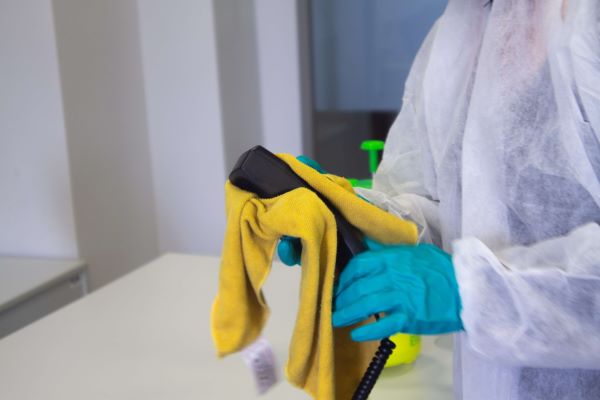You don’t need to be a cleaning fanatic in the cleaning business, but it helps.
You may start each job by grabbing chemicals, a towel, and something to hold water, then attacking the dirty areas with vigor. All you can do is hope you killed the hidden bacteria and filth our eyes can’t see. The air around you smells clean, and the area you scrubbed looks clean. Task accomplished.
Enter the microfiber cloth.
Why Is Microfiber so Special?
Microfiber is a polyester-nylon blend consisting of more than 200,000 fibers per square inch. The nylon carries a positive electrical charge, which attracts dust, dirt, and microorganisms. Each fiber can clean and pull up particles, so almost everything seen and unseen gets removed from the cleaning surface.
They are Better for the Environment
Microfiber towels and mops reduce the amount of water and chemicals used per cleaning. In most cases, water will suffice for standard cleaning routines, and if water is needed, it is much less than that used by cotton products.
The University of California Davis Medical Center (UCDMC) found that a microfiber mop only needed five gallons of water per one hundred rooms. In comparison, a cotton mop required 105 gallons of water. The same study found that microfiber mops only used .5 ounces of chemicals, compared to the cotton mop’s 10.5 ounces.
Microfiber cloths save water, reduce the number of chemicals we release into the environment, and provide healthier conditions for your clients.
Cleaning Versus Disinfecting
Cleaning is very different from disinfecting. You wash your dishes by hand to remove the leftover particles before placing them into the dishwasher to be disinfected. It’s the same for all other surfaces.
Cleaning removes the grit and bacteria from the surface, but some viruses will remain. The only way to eliminate them totally is through the use of chemicals.
Chemicals applied to surfaces help kill viruses and bacteria, but they also help with tough-to-remove stains, such as hard water. Using the chemical is just the first step. You must then wait for the dwell time to elapse before wiping away the product.
Microfiber cloths require a smaller quantity of chemical products to do the same job as cotton cloths. Still, it is best to stick to the manufacturer’s recommendations for dilution ratios. Microfiber not only kills the microbes but the food they require to thrive.
Microfiber Is a Complete Cleaning Package
Microfiber uses its static charge to trap small particles, bacteria, and dust. That helps in more ways than just cleaning counters and mopping floors. It also absorbs water and chemicals better, dispersing them on surfaces as needed. Here are a few cleaning tasks microfiber excels at:
• Disinfecting
• Dry-dusting
• Polishing
• Dry and wet scrubbing
Microfiber replaces cotton, knit, and polishing cloths, as well as lint-free and disposable rags. Microfiber should be your go-to cloth for all your cleaning needs.
Cleaning your Microfiber Cloths
Cleaning your microfiber cloths is simple, here are a few steps to ensure you wash correctly.
• Shake them out before washing them
• Use detergent without any additives, such as softeners or fragrance
• Consider hand-washing, if only lightly soiled
• Line dry if possible
• Dry on a low heat setting, without other items
Corvus Janitorial Systems
Corvus Janitorial Systems believes in making lives better (and easier), not just for our clients but also for those creating a cleaner, healthier environment every day. We offer a full range of cleaning services to our clients, including disinfecting and sanitizing services.
If you are a professional in the cleaning world and want to grow your business into something special, contact us to learn about our franchise opportunity.













